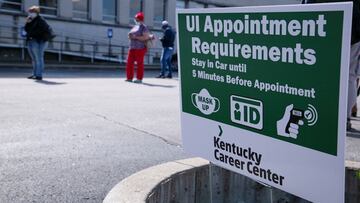What are the maximum unemployment benefits per state?
When millions of US workers lost their jobs due to the covid-19 pandemic, many learned the truth about the country’s broken unemployment insurance system.

Each month, millions of workers in the United States pay into state-run unemployment systems in the case that one day they need to claim those benefits. After millions of workers in the United States lost their jobs during the covid-19 pandemic, many realized that the benefits they were entitled to were much smaller than they might have thought. The amount received by unemployed workers varies widely across the United States as do the restrictions on the types of workers eligible to file a claim.
How are the amounts distributed through unemployment determined?
The amount of unemployment insurance received depends on how the state calculates a worker’s “base salary”. Since state governments are allowed to design their unemployment systems, the methods used to calculate a worker’s base salary are not standardized. In some states, workers receive about half of what they would have made at their job and most states cap the maximum amount recipients would be able to claim. Savings to Invest, a personal finance blog, published and updates a list of the “maximum weekly benefits” amount on their website.
Most workers do not receive the maximum weekly benefit and according to the Center on Budget and Policy Priorities, a nonpartisan research and policy institute, the average weekly amount distributed to unemployed workers in February 2020 stood at “$387 nationwide but ranged from a low of $215 in Mississippi to $550 in Massachusetts.” While the cost of living can explain some discrepancies in the quantities paid to unemployed workers, many policymakers and recipients of these benefits say that amounts are far too low across the board.
Take an example from Jackson, Mississippi, where the average rent price in 2020 was $798. The average unemployed person in Mississippi received a weekly benefit of $215 or $860 a month. After paying rent, our Jacksonian would only have $62 to cover all their other costs.
Once the pandemic began, lawmakers quickly saw that the United States could experience a mass wave of homelessness and starvation if benefit amounts were not increased. For that reason, in March 2020 when negotiating the CARES Act, lawmakers like Senator Bernie Sanders of Vermont and others pushed to boost the amount of money received by unemployment recipients by $600 on top of what they received from their state.
So rather than receiving $215 in Mississippi, the average unemployed worker would receive $815, or $3,260 a month. The CARES Act only allocated the funding necessary for the $600 topper to be sent through July 2020. After the benefit expired, those who still were without work went without additional benefits until December when Congress passed another covid relief bill that included an expanded unemployment benefit of $300 a week. In March 2021, Congress passed the American Rescue Plan, which extended the enhanced $300 benefit through September 2021, giving unemployed workers a cushion until the economy recovers more thoroughly and it becomes easier to find work.
- Veteran third stimulus check: how much and when?
- Why you won’t be seeing a fourth stimulus check
- IRS announces weekly stimulus check payments
- Why would you have to return my third stimulus check?
Will unemployment benefits be increased at the federal level permanently?
After millions of unemployed workers struggled to apply and receive the benefits they were entitled to, some lawmakers say it is time for the entire unemployment system to be revamped and modernized.
On Wednesday, 14 April, two Democratic senators, Ron Wyden of Oregon and Michael F. Bennet of Colorado, released a proposal to revamp and expand unemployment systems and benefits in the United States. When describing the proposal, Senator Bennet explained that it would “help ensure benefits cover the basics, minimize the glaring disparities between state programs and create a permanent benefit for self-employed workers.”
Related stories
One of the aims of the proposal would be to make the amounts disbursed more equal across states by creating a federal standard that “weekly benefit amounts must replace 75 percent of the claimant’s average weekly earnings in the claimant’s highest quarter of earnings during the base period, subject to the state’s maximum benefit amount.”
The proposal also provides language on how states would be able to set the “maximum benefit amount,” stating that it “must be equal to at least two-thirds of [the] state’s average weekly wage.” Senator Bennet outlined the urgency for these changes saying that the investment needed to fix these systems should come quickly or else they “will be even more broken when the inevitable next recession hits.

